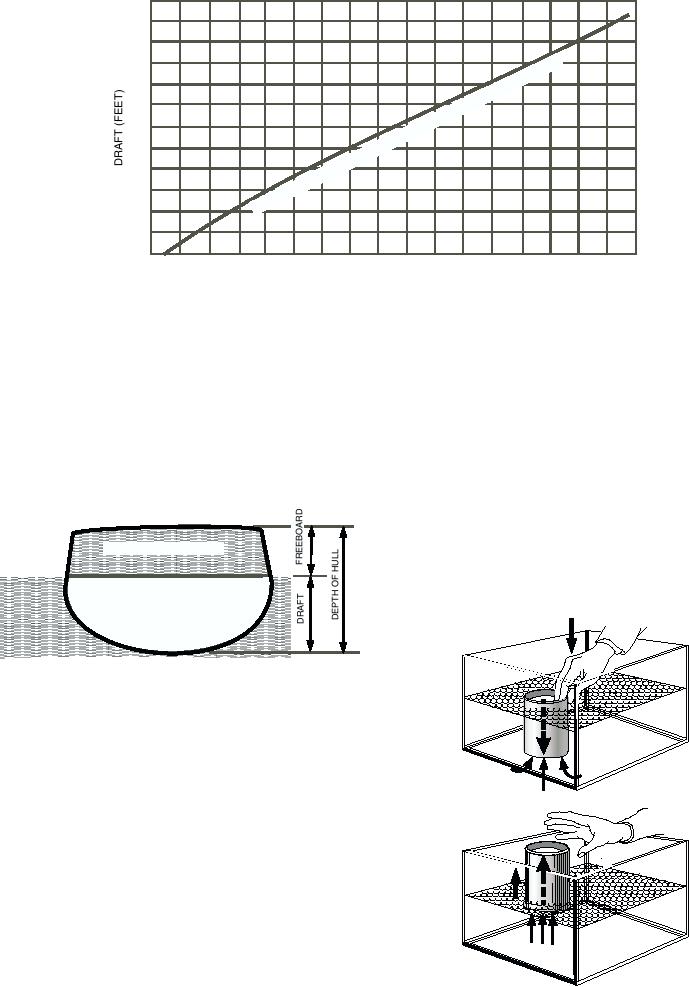
32
30
28
26
ON
RT
E
TP
24
E
FE
BIC
22
CU
35
AT
20
R
TE
WA
18
T
AL
NS
TI
16
N
ME
E
14
AC
PL
DIS
12
10
8
3
4
5
6
7
8
9
10
11
12
13
14
15
16
17
18
19
20
DISPLACEMENT (TONS - IN THOUSANDS)
DCf1214
Figure 12-14. Example of a displacement curve.
The force of gravity is a resultant or composite force,
Freeboard, a rough measure of reserve buoyancy,
including the weights of all portions of the ship's
is the distance in feet from the waterline to the weather
structure, equipment, cargo, and personnel. The force
deck edge. Freeboard is calculated at the midship
of gravity may be considered as a single force, which
section. As indicated in figure 12-15, freeboard plus
acts downward through the ship's center of gravity (G).
draft always equals the depth of the hull in feet.
The force of buoyancy is also a composite force,
which results from the pressure of the water on the
ship's hull. A good example of this is immersing a
container in a tank of water as shown in view A of
RESERVE BUOYANCY
figure 12-16. The container must be held under the
WATERLINE
water to keep it from rising. View B of figure 12-16
shows the position of the container when it is released.
DCf1215
Figure 12-15. Reserve buoyancy, freeboard, draft, and depth
of hull.
When weight is added to a ship, draft and
A
displacement increase in the same amount freeboard
and reserve buoyancy decrease. It is essential to the
seaworthiness of a ship to retain a substantial amount
of reserve buoyancy. Some ships can take more than
their own weight in flooding water aboard without
sinking due to reserve buoyancy.
Center of Buoyancy
When a ship is floating at rest in calm water, it is
B
acted upon by two sets of forces: (1) the downward
Figure 12-16. A. An immersed container; B. The container
force of gravity and (2) the upward force of buoyancy.
forced upward.
12-7

